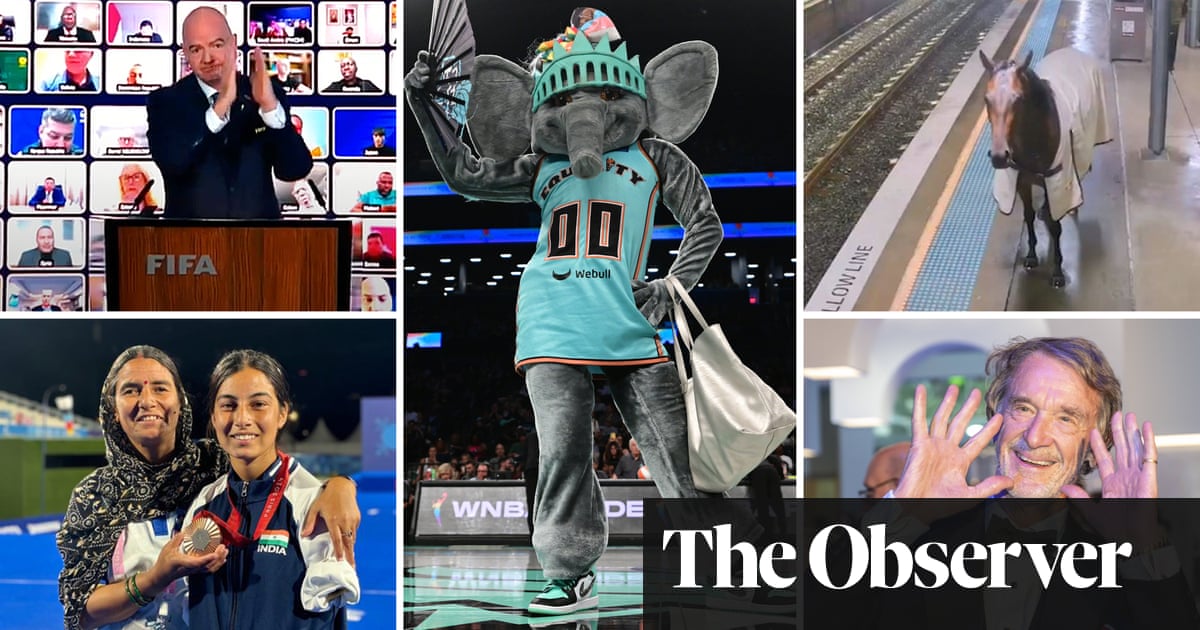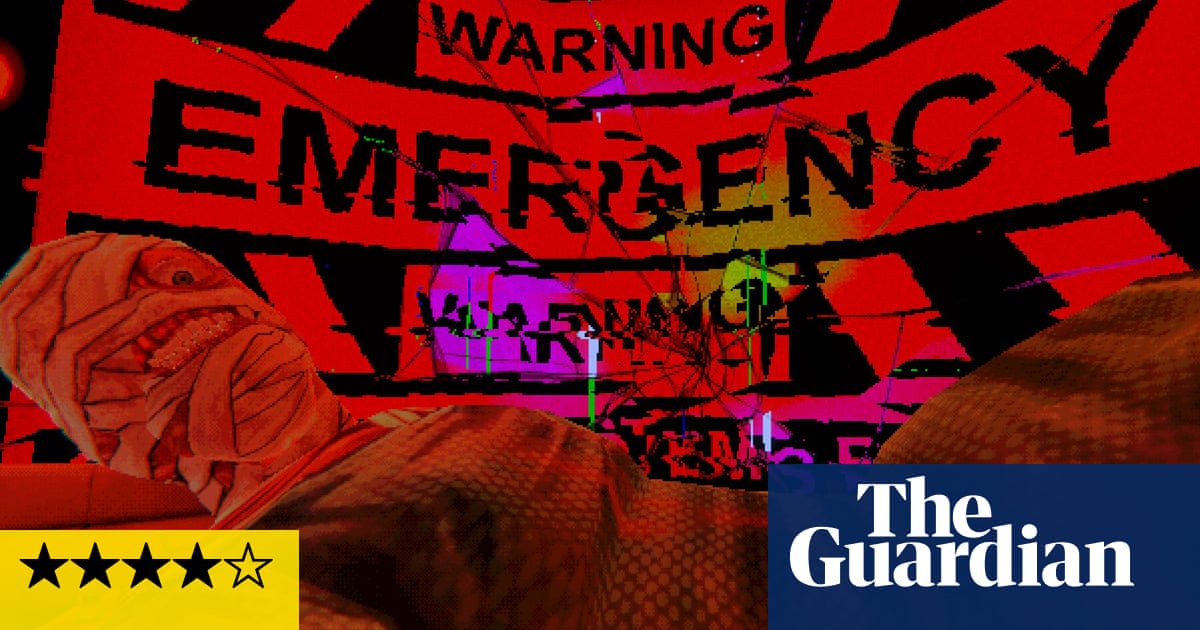A mesmerising film by the British artist Ed Atkins (b.1982) shows a pianist performing – with excruciating difficulty – what seem to be arbitrary chords in some mysterious sequence. Straining and sighing, pausing and deliberating, he appears to be guessing the notes. Yet every strike is right, or so the visible relief running through his face and body appears to confirm. Except that the pianist is not real, and nor are his emotions.
The man is a digital avatar of Atkins himself, his performance translated by motion capture into this hyperreal model. The excessively perfect rendering of every imperfection, from stubble to wen, gives it away. But so do the movements of eyes and head, which have a trace of the super-glide smoothness of CGI – expertly programmed and yet still unable to capture the vagaries of human vitality.
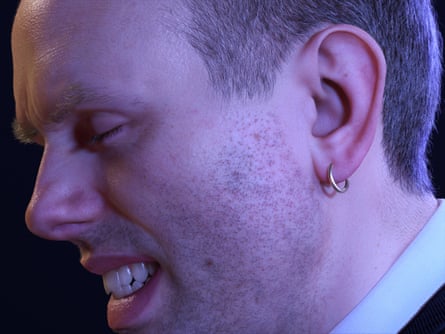
If the man is made of nothing, what about the music: is it also made up? There is a semblance of improvisation, hands trembling over the keys, eyes opening and shutting in private meditation. In fact he is playing Swiss composer Jürg Frey’s minimalist Klavierstück 2, its pauses so agonisingly variable that he might be counting the seconds. But you only know this from a wall text. Your uncertainty matches his (or its) anxiety. It seems as if the avatar is a virtuoso pianist: inwardly tormented, externally vulnerable. But how can one know, from this pixel-thin figment of advanced technology?
Strange and increasingly tense, this film, Pianowork 2 (2023), comes about halfway through Tate Britain’s major retrospective of Atkins’s prolific career. By now, you might guess that the figure is based on the artist. Self-portraits in red pencil appear throughout, mechanically impressive yet from the most unflattering angles – head lolling, mouth hanging, from below the chin. Equally startling is the accompanying caption, in which Atkins excoriates his own appearance. “I am often entirely destroyed by an image of myself.”
This open-hearted candour goes with a fastidiously sealed aesthetic. All representation involves artifice, of course, but still we long to depict life, even now that machines do it for us. Ever since he took up computer editing at the Slade, Atkins has been examining the diminishing gap between the digital and the real with a questioning, fascinating melancholy.
To begin with, he used found footage spliced with abrupt audio, multiple jump cuts, focus pulls and lens flares. Verité is a fiction (as cinema has told us). But his ideas were steadily expanding. How It’s Made (2015) cuts factory footage with readings from Swann’s Way so that the manufacturing of candles, for instance, seems suddenly alien and fearful. Snuff out the candle – Proust’s great dread – and in floods the darkness.
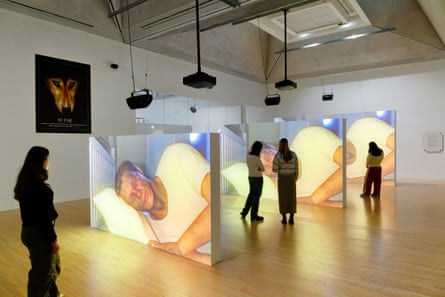
Soon came the male avatars: the tattooed drunk in Atkins’s breakthrough Ribbons (2014), a thuggish descendant of Max Headroom uttering fragments of poetry. The muttering man in Hisser (2015), masturbating in one corner of a lonely bedroom that will soon be swallowed up without trace down a sinkhole – a true story that became an obsession, filmed across three screens that increase in size, as if Atkins was trying harder and harder to make sense of it.
“I’m sorry… I didn’t know,” says one character, over and again, in a feedback loop that inflects the phrases with ever-changing meaning. Trying to speak, wanting to communicate, but saying what exactly? These artificial beings are stymied and stuttering. Some can’t speak at all, like the boy, the man and the baby in the film sequence Old Food, who weep continuously for something, or nothing (or the impotence of their own fake condition).
The baby’s tears are slickly viscous but the soundtrack of the man crying, audible through several galleries, is so real it calls on your empathy. There is a strong sense of confusion, deja vu and anxiety through the show. You hear a noise and think someone is actually behind you, retrace your steps and see the same film differently through the back of the screen. For Atkins, according to his outstanding words in the catalogue (he is a celebrated writer too), the exhibition is a reimagining of life’s chaos: the more we experience, the more complex and less contained it all becomes.
Artworks are split across galleries, not always successfully. The garbage that rains weightlessly down from high heaven in one room ends in a bathetic junk heap in another. The absurdism can be wilfully crude. Unoccupied beds, hitched to hospital wires, shudder and writhe. A medieval peasant wandering through a forest is video-game animation, and racks of German opera costumes alongside carry no charge as empty props.
But if the films sometimes appear creepy and cold, like something trapped beneath a stone, it is because the characters are just going through the motions. They have no freedom of expression, only what Atkins permits. And the sense is that what you are encountering throughout is the artist’s own knowledge of distance, pain and deferral.
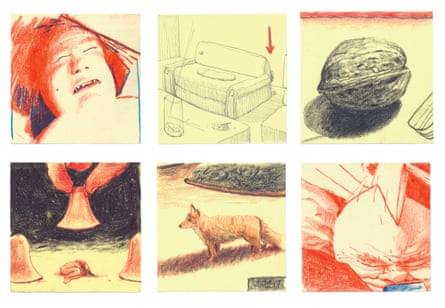
The way his father’s early death suffuses everything, his thwarted audio attempts to talk long-distance to his mother, or to communicate with his young daughter through daily Post-it note drawings for her lunchbox: Atkins is always trying to catch the irretrievable moments as they pass. His child resists “all this projected significance”, but for him this is the most honest of self-portraits.
The final work at Tate Britain is Nurses Come and Go, but None for Me (2024), a two-hour feature film that opens with Saskia Reeves ushering six young people into a room where Toby Jones will read the sicknotes, as he called them, of the artist’s late father. Hospitalised, desperately ill with cancer, the patient rises at every moment to the world still around him with intense poignancy, humour and grace. The social life of the wards is recorded as exquisitely, and originally, as the private experience of the patient. Atkins’s camera searches the faces of the audience and finds what artificial images can never begin to express: the spontaneous beauty of true human responses.

.png) 1 day ago
3
1 day ago
3


























